When we think of the Renaissance, the wonders of cities such as Florence, Venice, Urbino, Padua, Mantua, Vicenza, partly of Rome, Bologna automatically emerge from our imagination. However, not many people immediately name Milan among the major Renaissance cities of Italy: yet, Milan was one of the most important capitals of the fifteenth and sixteenth centuries, and it experienced a fruitful artistic season, which culminated, at the end of the fifteenth century, with the arrival in the city of Leonardo da Vinci, who stayed in Milan for almost twenty years.
A propelling center of the Lombard Renaissance, which in Milan and its environs knew different declinations from those of other cities in Italy but was no less interesting (the subject has recently been extensively explored with the exhibition Il Corpo e lAnima, da Donatello a Michelangelo. Italian Renaissance Sculpture), the Lombard city, first with the Visconti and then especially with the Sforza, also became one of Italy’s main artistic capitals during the 15th and 16th centuries: numerous new construction sites were opened (some of the buildings erected at the time still mark the face of the city today) and numerous artists arrived, mostly called from outside. One above all, the Florentine architect Antonio di Pietro Averlino, known as Filarete, who arrived in Milan in 1451 and was the first important Tuscan architect active in the area. And then the great local, Milanese or Lombard artists: Bonifacio Bembo, Giovanni Solari, Bernardino Butinone, Bernardo Zenale, Bartolomeo Suardi called the Bramantino the Mantegazza brothers, Giovanni Antonio Amadeo, Agostino de Fondulis, the large circle of Leonardo painters, and many others. Their works tell us about a Milan that was a very important cultural and economic center as early as the 15th and 16th centuries. Let’s find out in this “tour” of ten places to see in the city!
The best-known image of the Renaissance in Milan is Leonardo da Vinci’s LastSupper, the wall painting that the great Tuscan artist made in the refectory of the Dominican convent of Santa Maria delle Grazie between 1493 and 1498. It is one of the capital paintings in the history of art, capable of surprising his contemporaries, who for the first time witnessed a powerfully human depiction of theLast Supper, with a study of the “motions of the soul” capable of capturing the feelings of astonishment, disappointment, frustration and anger on the faces of the apostles at the moment of the announcement of Judas’ betrayal. Leonardo painted theLast Supper dry, and for that reason it is a very delicate work that was already in a state of decay when Giorgio Vasari, who called it a “beautiful and marvelous thing,” saw it in the mid-sixteenth century. In 1980 it was declared, along with the entire Santa Maria delle Grazie complex, a UNESCO World Heritage Site because it was a “unique artistic achievement of outstanding universal value that transcends all historical contingencies.” Between 1979 and 1999, however, it was the subject of Pinin Brambilla Barcilon’s celebrated restoration. In order to visit the Last Supper, it is advisable to make reservations well in advance because visits, for conservation reasons, are heavily restricted.
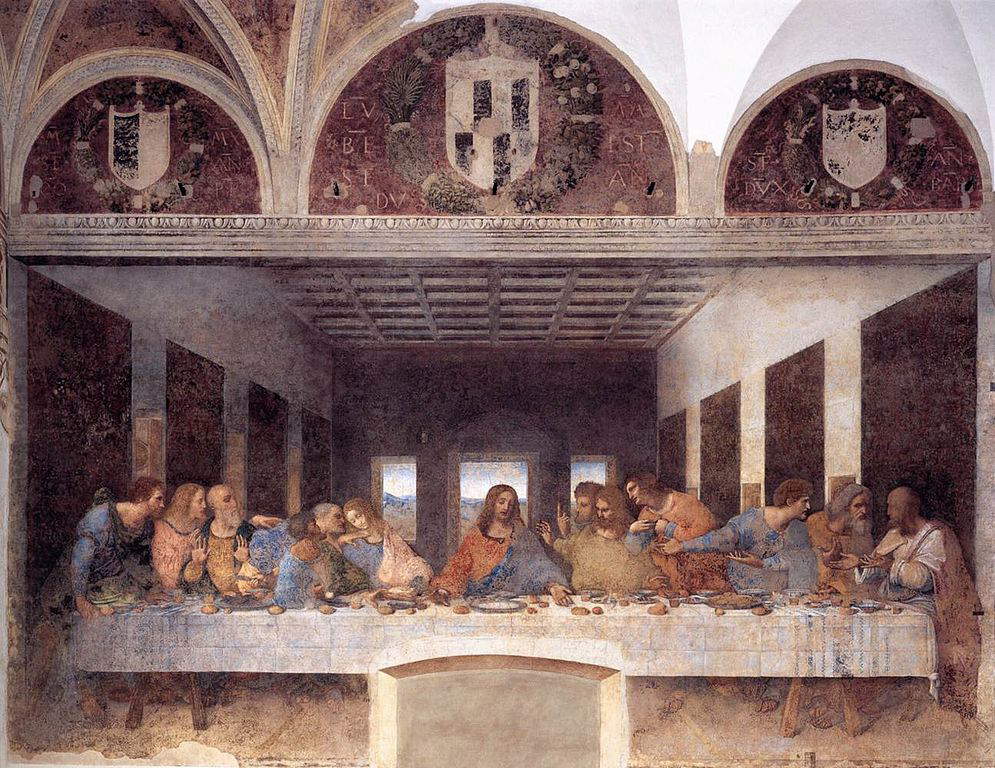
The basilica of Santa Maria delle Grazie, built between 1463 and 1497 with architect Guiniforte Solari directing the work until the year of his death (1481), is part of the same complex where Leonardo’s Last Supper is located and is one of the most recognizable Renaissance architectures in the city. It features externally with its sober gabled facade and a dome enclosed by its characteristic prism-shaped tiburium, and internally with some of the most important masterpieces of Renaissance Milan, starting with Bramante’s tribune: the artist from the Marche region was called to Milan by Ludovico il Moro and given the task (although evidence of documents is lacking, although we know that in the 1590s Donato Bramante was ducal engineer) of designing the new tribune, inspired by Brunelleschi’s Old Sacristy in San Lorenzo in Florence. We then visit the Sforza Mausoleum, designed by Cristoforo Solari, the Chapel of Santa Corona with a sumptuous Crucifixion by Gaudenzio Ferrari (also the author, in the same chapel, of theEcce Homo and the decorations of the sails), Giovanni Demio’s frescoes in the Sauli Chapel, the Chapel of St. John the Baptist with an altarpiece by Leonardo’s Marco d’Oggiono in the center, the Old Sacristy, and the Cloister of the Frogs. Many of the paintings here in ancient times were removed during the Napoleonic spoliations (one of the greatest losses is Titian’sCoronation of Thorns now in the Louvre).
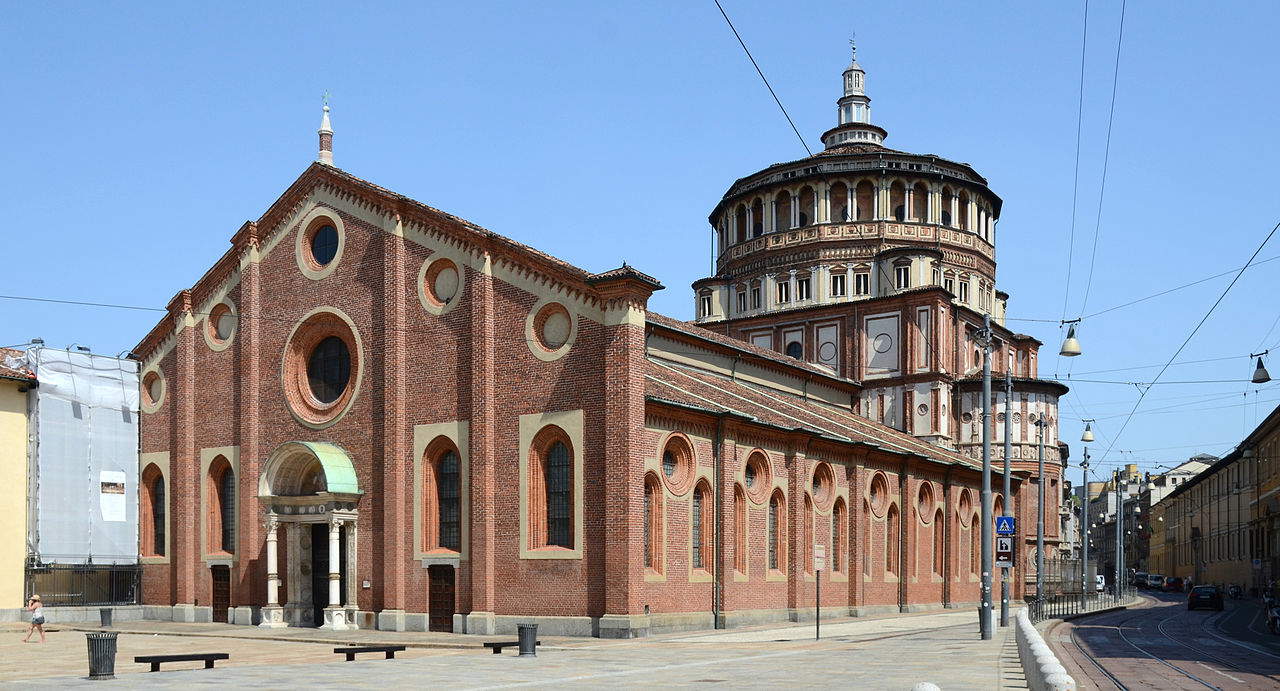
The church of Santa Maria presso San Satiro, which stands in a small square that opens up at the beginning of the central Via Torino, a few steps from the Duomo, was built between 1478 and 1518: the name of the church is due to the fact that the new Renaissance house of worship was built near a small 9th-century shrine dedicated to St. Satyrus, later incorporated into the complex. The church is visited mainly to admire the spectacle of Bramante’s mock choir, a painting simulating a monumental choir that became necessary because other buildings were rising behind the transept and consequently lacked space for an expansion of the building. Donato Bramante solved the problem by creating, in a space only 97 centimeters deep, a work that, by the sole means of perspective, was able to simulate the choir, complete with a coffered vault, giving the illusion of a much deeper room than it actually is. Also in the church is a visit to the Bramantesque Sacristy and the Sacellum of San Satiro where one of the sculptural masterpieces of the Lombard Renaissance, the extraordinary Pietà by Agostino de’ Fondulis, is kept.
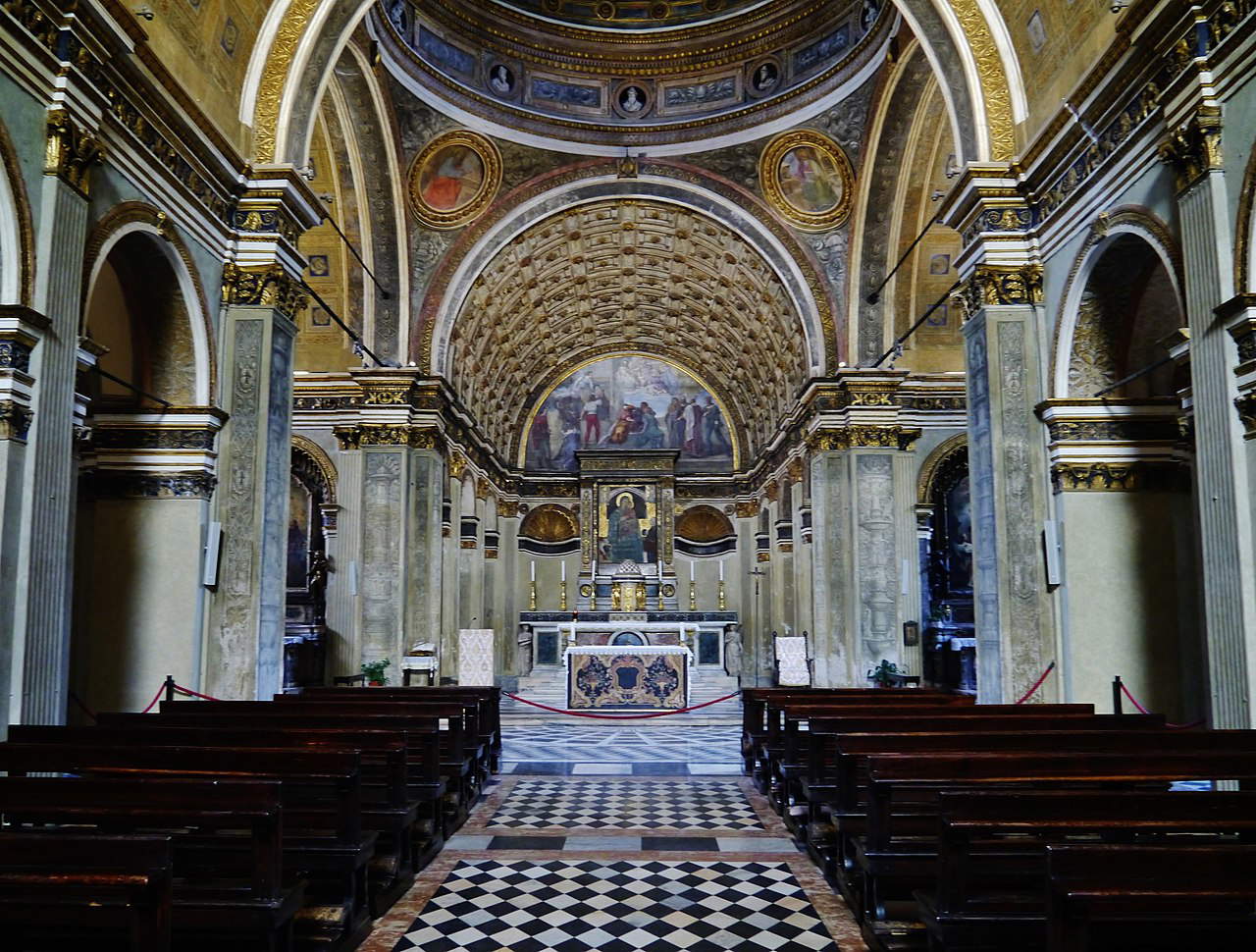
The church of San Maurizio al Monastero Maggiore is another 16th-century church built on the basis of an earlier building: in this case, construction began in 1503 and was finished after a very short time, in 1509 (the facade, however, was not finished until 1574). Inside you can admire some masterpieces of the Lombard Renaissance: the Aula dei Fedeli with frescoes by Bernardino Luini (which some emphatically call the “Sistine Chapel of Milan”), the Chapel of St. John the Baptist frescoed around 1545 by Evangelista Luini, who probably enlisted the help of a very young Giuseppe Arcimboldi, the Chapel of St. Catherine of Alexandria with decorations that constitute Bernardino Luini’s ultimate masterpiece, and above all the splendid Aula delle Monache, the first room in the church to be frescoed, in the 1510s, with works from the workshop of Vincenzo Foppa and Giovanni Antonio Boltraffio, only to be completed a few years later with frescoes by Bernardino Luini.
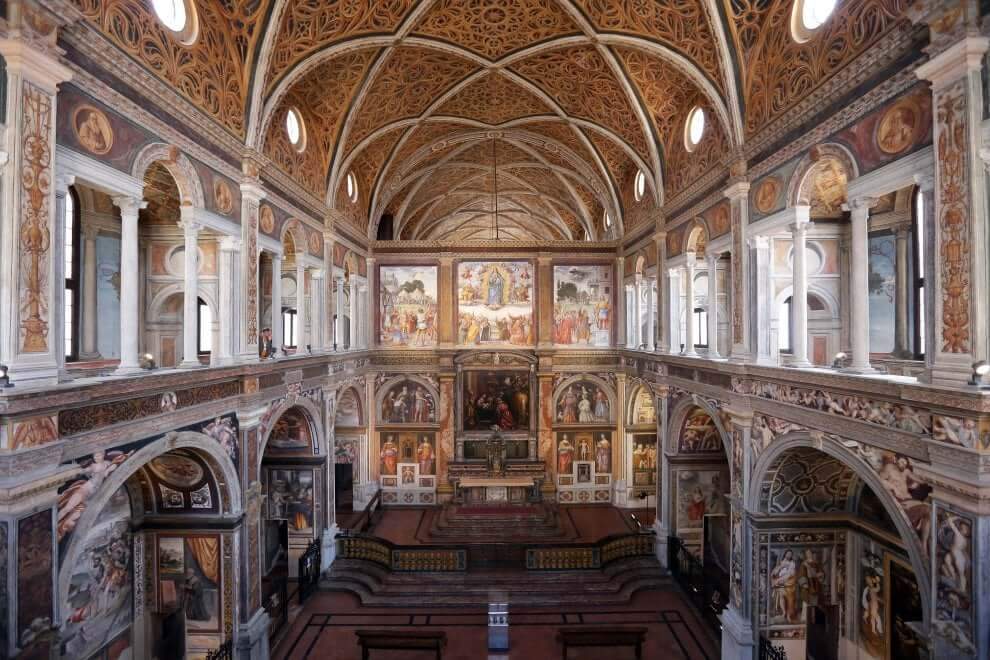
Castello Sforzesco has fourteenth-century origins, but during the Sforza era there were several modifications and additions, above all the famous Filarete Tower, or the main tower of Castello Sforzesco, built in the second half of the fifteenth century: this was the time when the castle, from being an austere fortification, became the center of the court of the Duchy of Milan, so much so that even the interiors were decorated. Not to be missed, therefore, is a visit to the Sala delle Asse, where one of Leonardo da Vinci’s masterpieces is located, the famous faux pergola painted on all four sides of the room(more on that here). Other rooms were decorated by Bernardino Zenale, Bernardino Butinone and other artists. At the Castello Sforzesco, a visit to the Pinacoteca is not to be missed, to get a closer look at the history of the Lombard Renaissance with some important works by artists (all the major authors of the period are represented), with a tour that culminates in the room that houses Michelangelo Buonarroti’s Pietà Rondanini, purchased by the City of Milan in 1952, but whose ancient history is not linked to that of the city.
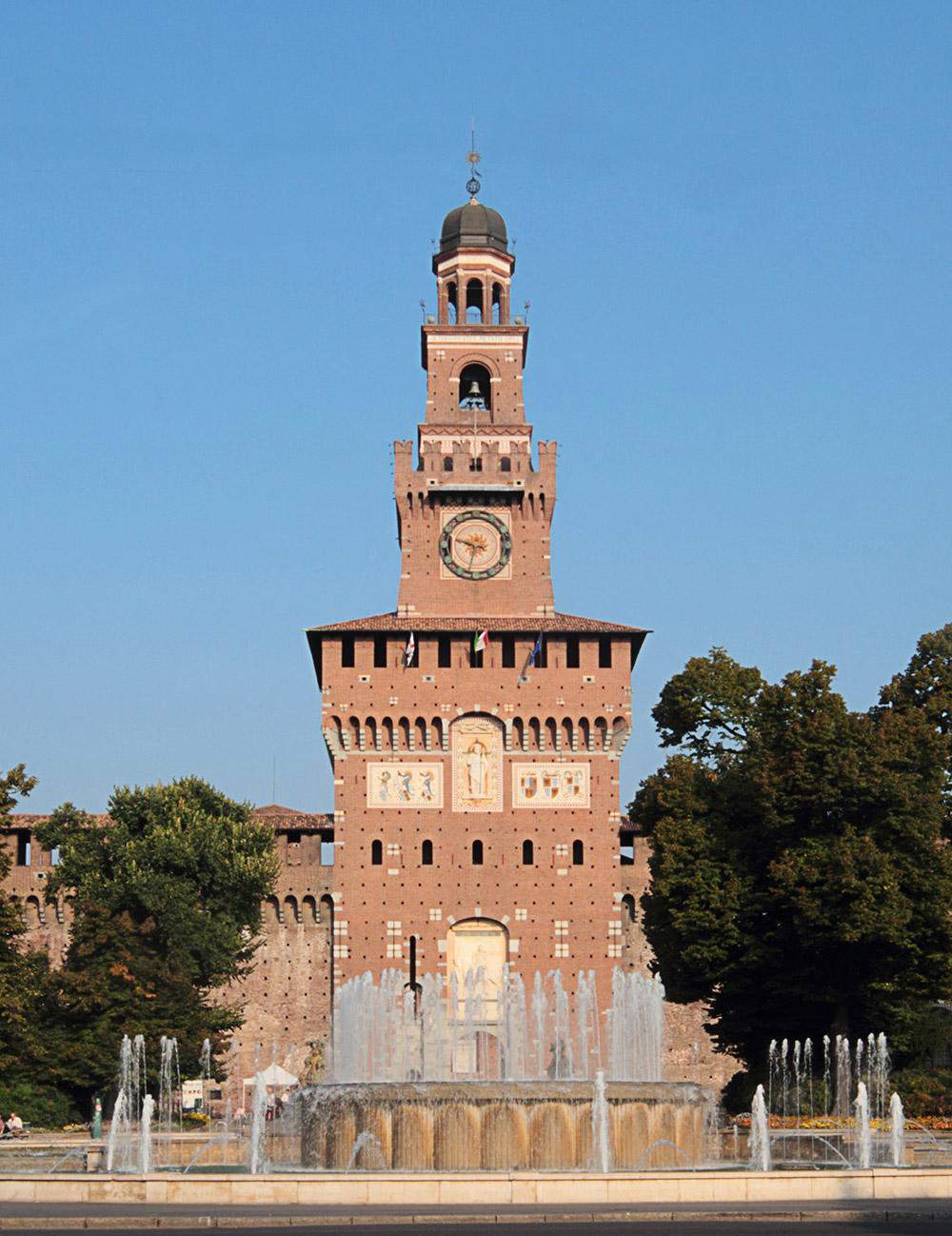
The basilica has very ancient origins (it was founded around 344), but it has been remodeled several times over the centuries, and today externally it has a neo-Romanesque facade due to restoration work in the second half of the 19th century. The basilica is distinguished by its precious frescoed rooms, above all the marvelous Portinari Chapel, built between 1462 and 1468 at the behest of Pigello Portinari, director of the Milan branch of the Banco Mediceo, and decorated with frescoes by Vincenzo Foppa. Other majestic Renaissance rooms inside the basilica are the Torriani Chapel and especially the Brivio Chapel, a room built by one of the most prominent families in the Milan of Ludovico il Moro, and whose structure is inspired by that of the Pazzi Chapel in Florence. On the apse stands a triptych by Bergognone, with the Madonna and Child, St. James and St. Henry, and on the left side is the funeral monument of Giacomo Brivio, a masterpiece of Lombard funeral statuary, and works by Francesco Cazzaniga and Benedetto Briosco.
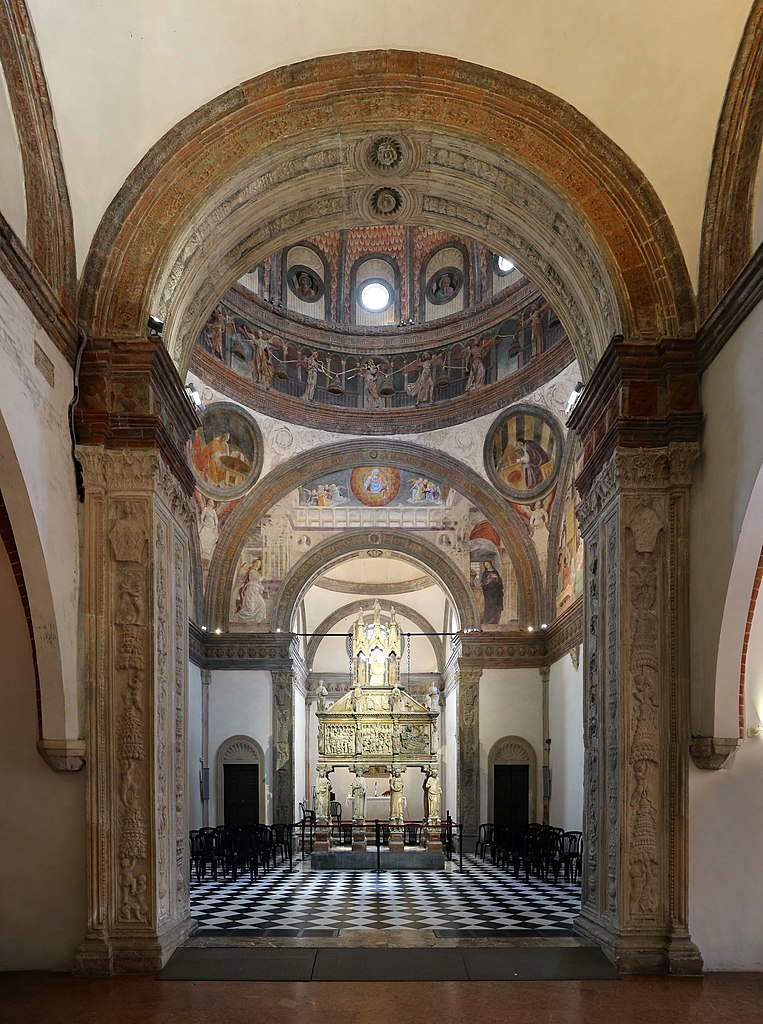
It is located a short walk from Santa Maria delle Grazie and is an interesting 15th-century mansion from the time of Ludovico il Moro. It was the residence of the nobleman Giacometto di Lucia dell’Atella, who received this dwelling as a gift directly from Ludovico il Moro: the Atellani lived here until the 18th century, after which the house was inhabited by various families (the Taverna, the Pianca, the Martini di Cigala), until in 1919 it was bought by Ettore Conti, who entrusted its renovation to the great architect Piero Portaluppi, who also authored the restorations after the bombings of World War II. Today’s facade was redone by Portaluppi, but inside parts of the original structure are still preserved, starting with the lunettes with painted portraits from the early 16th century, and traces of frescoes in the 15th-century courtyard. The garden, also restored by Portaluppi in a neo-Baroque style, has recently been planted with the so-called Leonardo da Vinci Vineyard, a vineyard donated to the great Tuscan artist by Ludovico il Moro during the work on theLast Supper (the original vineyard was not exactly on the present site, but was nevertheless not far away).
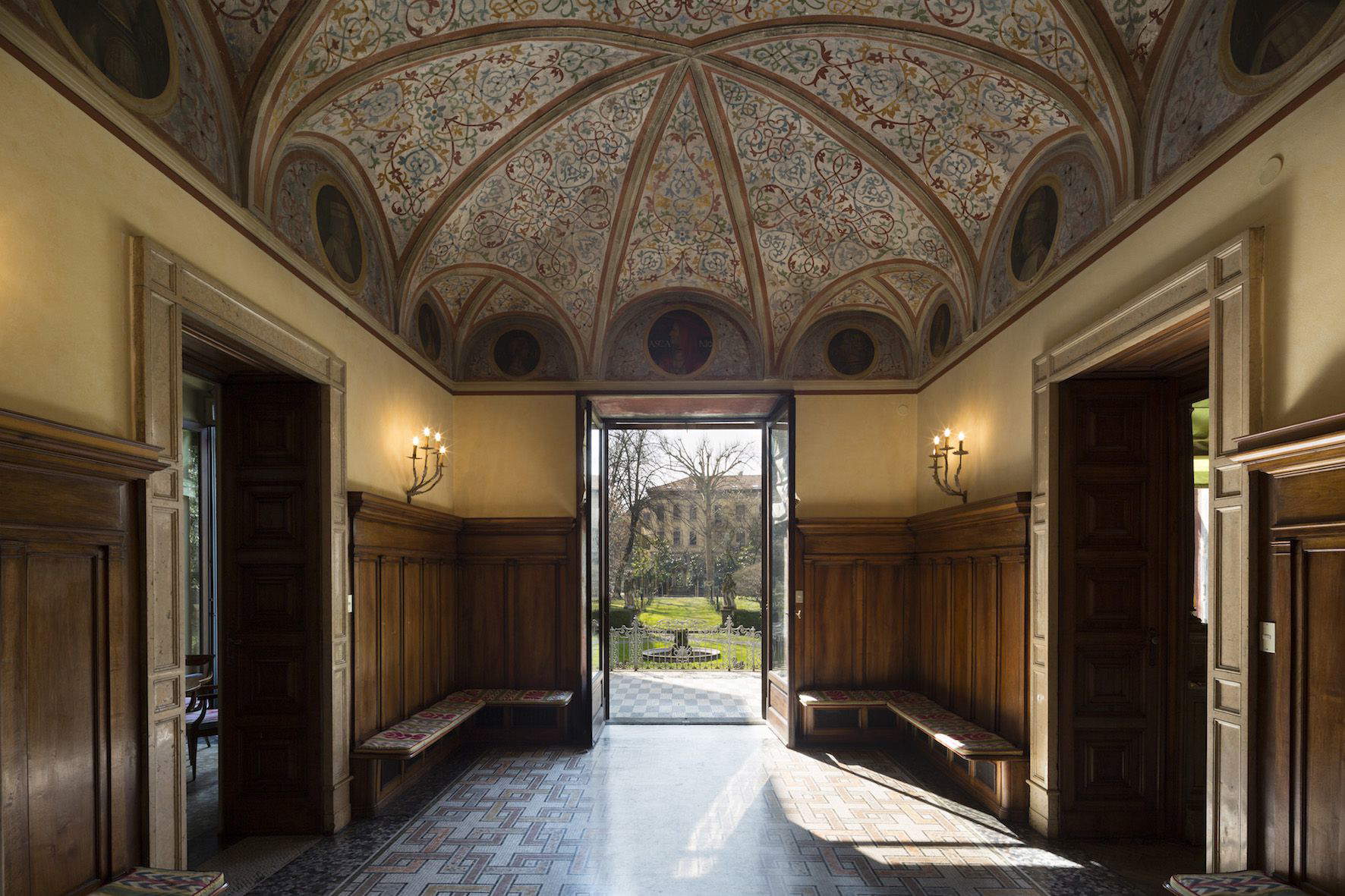
The Ca’ Granda, now home to the State University, is one of the symbols of Renaissance Milan: it was built during the duchy of Francesco Sforza, who wanted to provide the city with a large and modern hospital. Construction began in 1456, and the project was due to Filarete, who was later succeeded by Guiniforte Solari and, after the latter’s death, Giovanni Antonio Amadeo, who modified Filarete’s design to make it more inclined to the Lombard taste of the time. Work continued until 1499, the year of the fall of the Sforza family, and following the event was interrupted, only to resume in the seventeenth century. Although the building site was not yet completed, the Ca’ Granda nevertheless, as early as the 15th century, began to function as a hospital. Devastated by bombing in 1942-1943, the building was later rebuilt.

Built between 1450 and 1460, the church of the Incoronata is another of the most important buildings in Sforza’s Milan. It is also known as a “double church,” because it resulted from the union of two churches, so much so that it presents itself externally with a symmetrical façade, and the interior has a peculiar and rare two-nave plan. The layout of the church is still in the late Gothic style, but the interior is home to some masterpieces of Renaissance dia rtists: a fresco by Bergognone depicting the infrequent iconography of Christ under the press, which was born in the very second half of the 15th century, and the tomb slab of Giovanni Bossi attributed to one of the great sculptors of Renaissance Milan, Agostino Busti known as Bambaia.
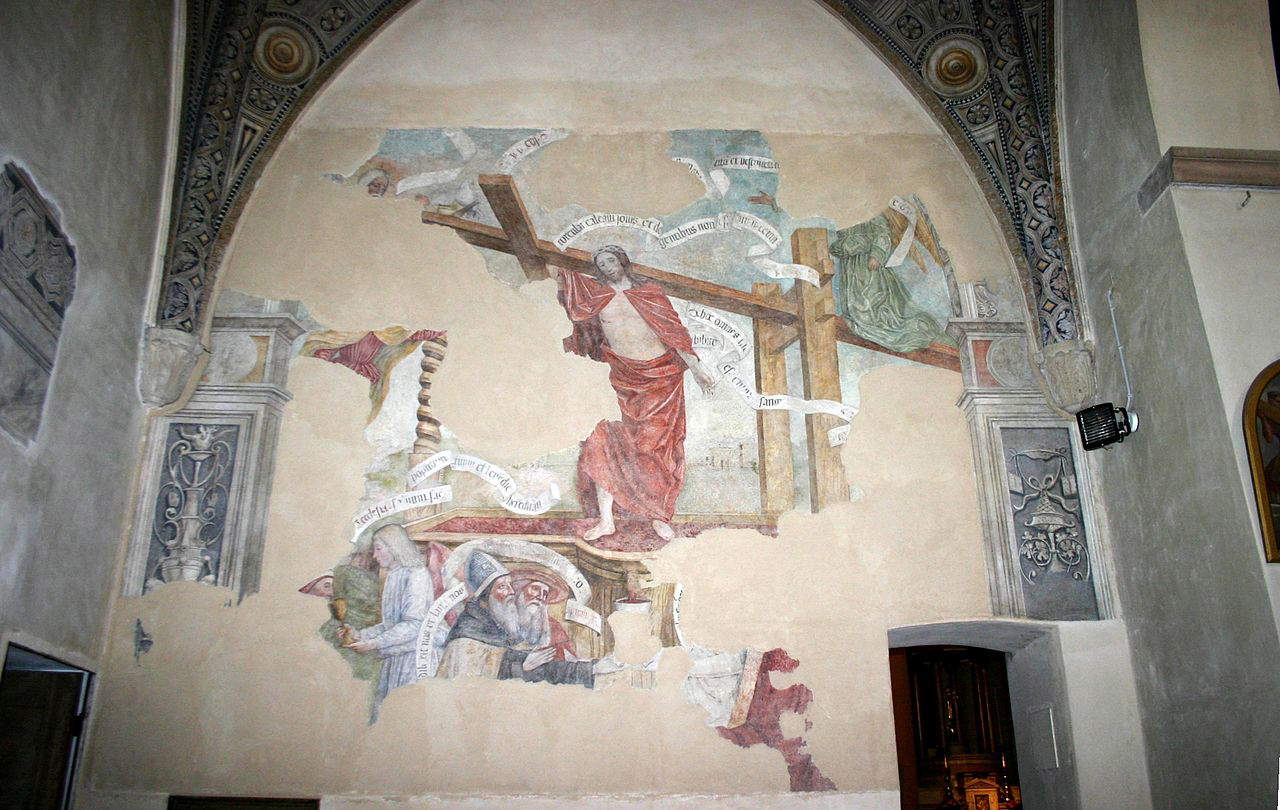
A tour in Renaissance Milan cannot be said to be complete without a visit to the museums where you can admire many masterpieces by the greatest artists: visits to the Pinacoteca di Brera, Pinacoteca Ambrosiana, Museo Diocesano, Museo del Duomo, and Museo Poldi Pezzoli are therefore a must. Also discover the tour between five museums to learn about the works of Leonardo’s artists, such as Francesco Melzi, Gian Giacomo Caprotti called the Salaì, Giovanni Ambrogio de Predis, Marco dOggiono, Giovanni Antonio Boltraffio, Cesare da Sesto, Giovan Pietro Rizzoli called the Giampietrino, and Francesco Galli called the Napoletano, other great protagonists of the Renaissance in Milan.
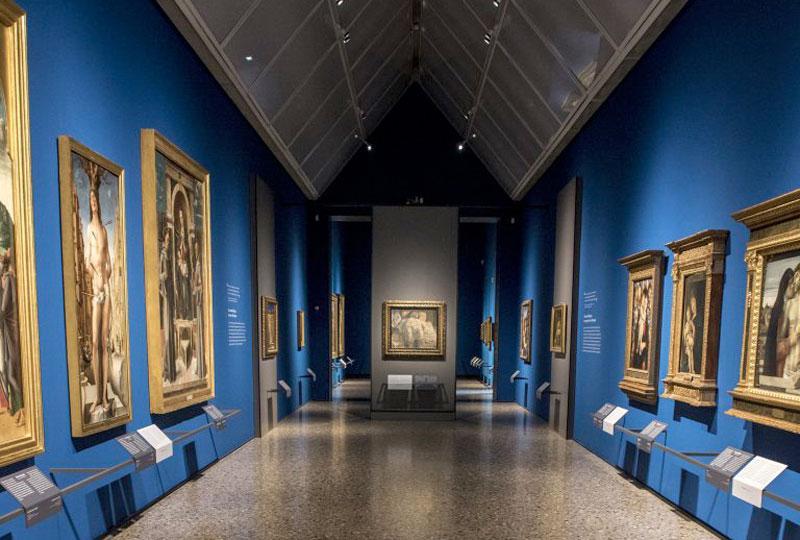
 |
| The Renaissance in Milan: 10 places to see in the city |
Warning: the translation into English of the original Italian article was created using automatic tools. We undertake to review all articles, but we do not guarantee the total absence of inaccuracies in the translation due to the program. You can find the original by clicking on the ITA button. If you find any mistake,please contact us.